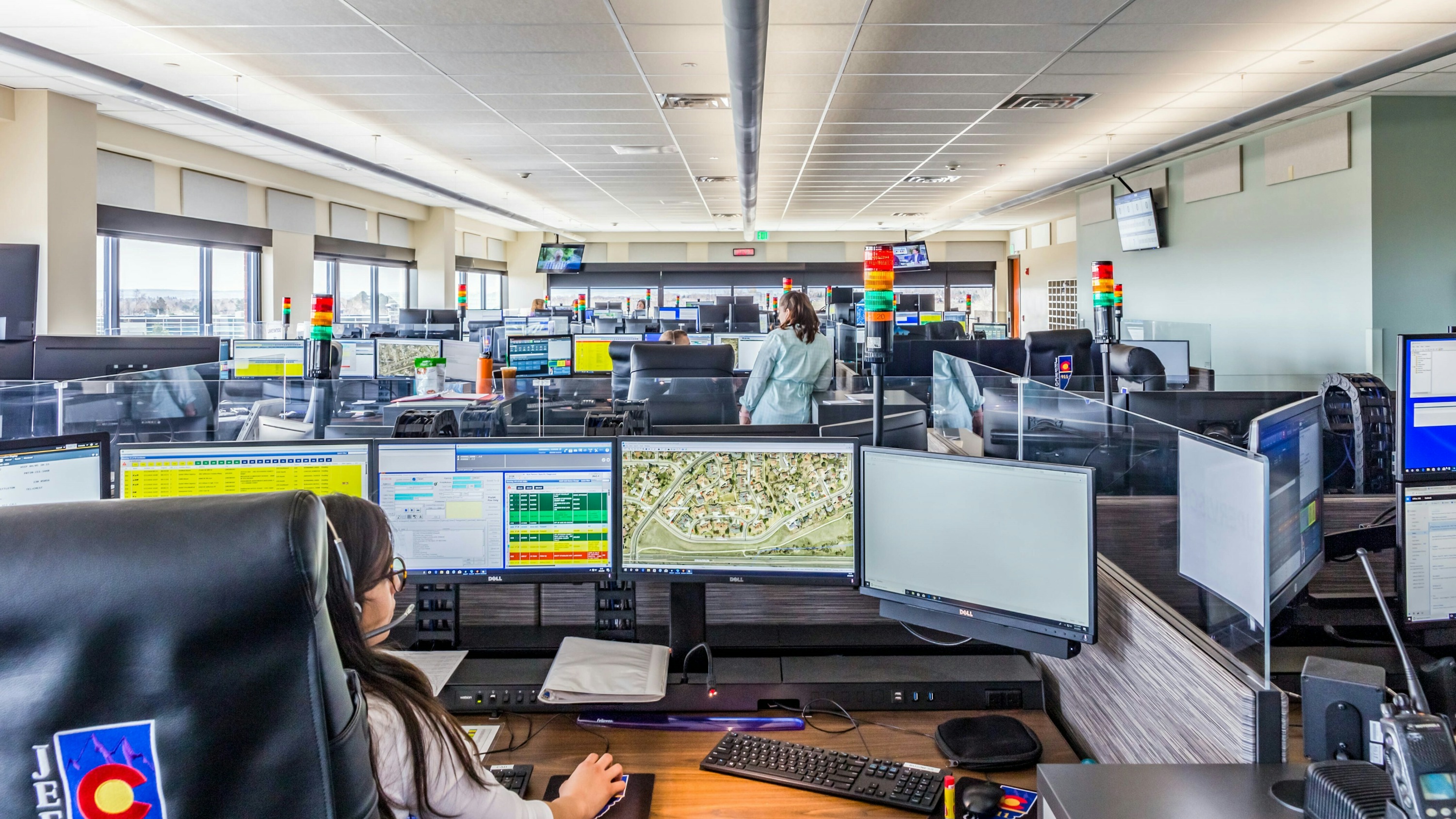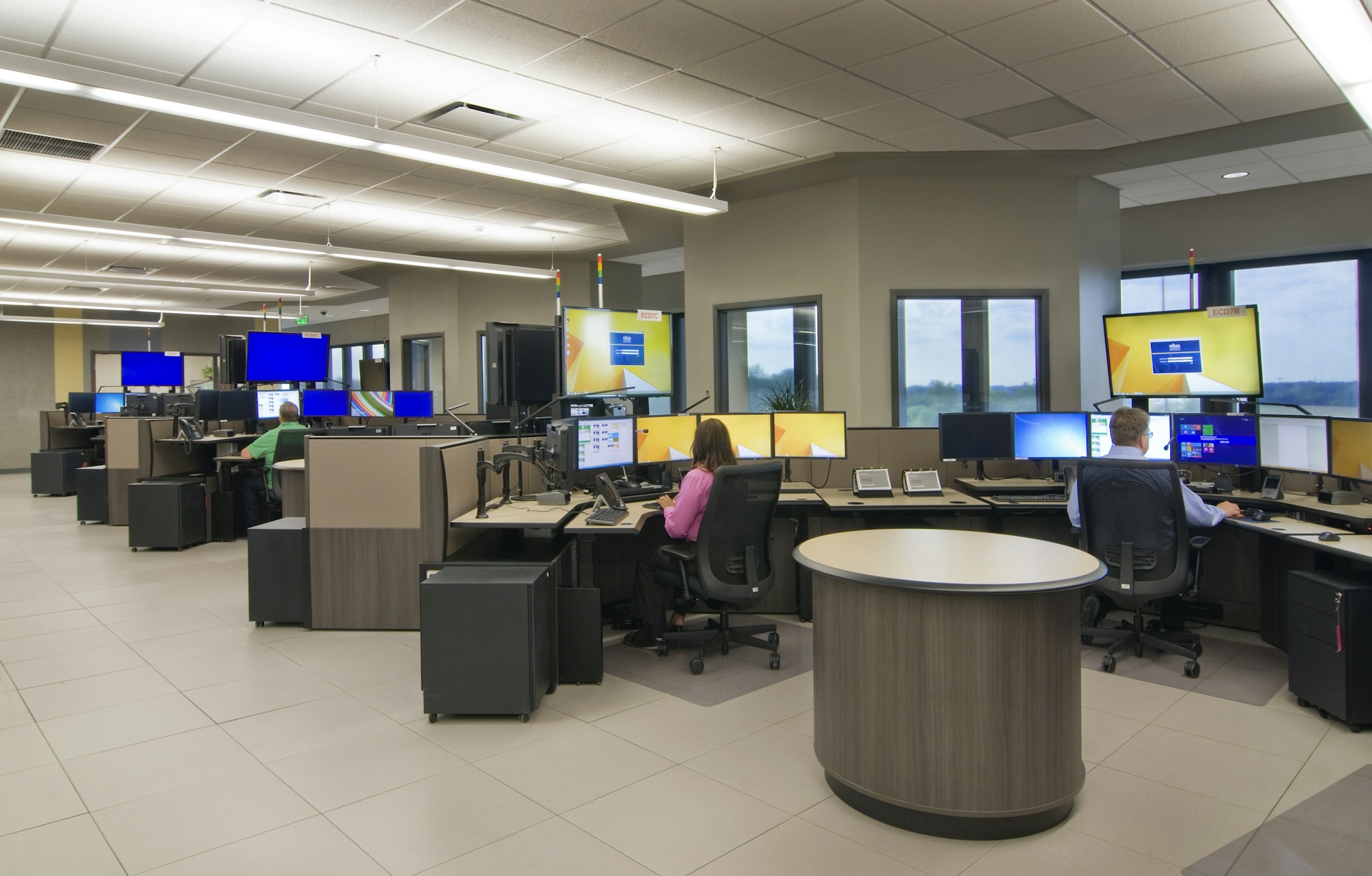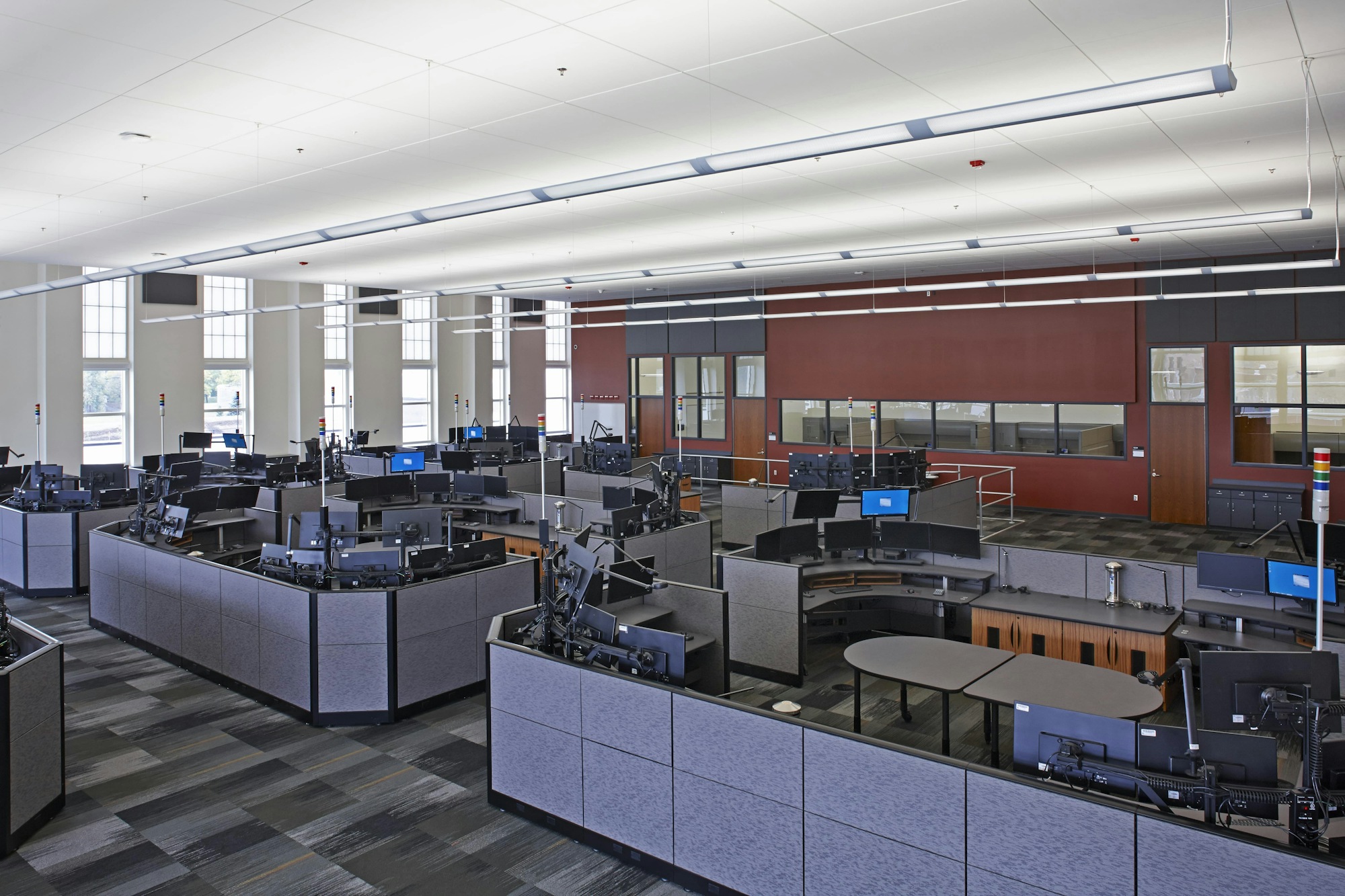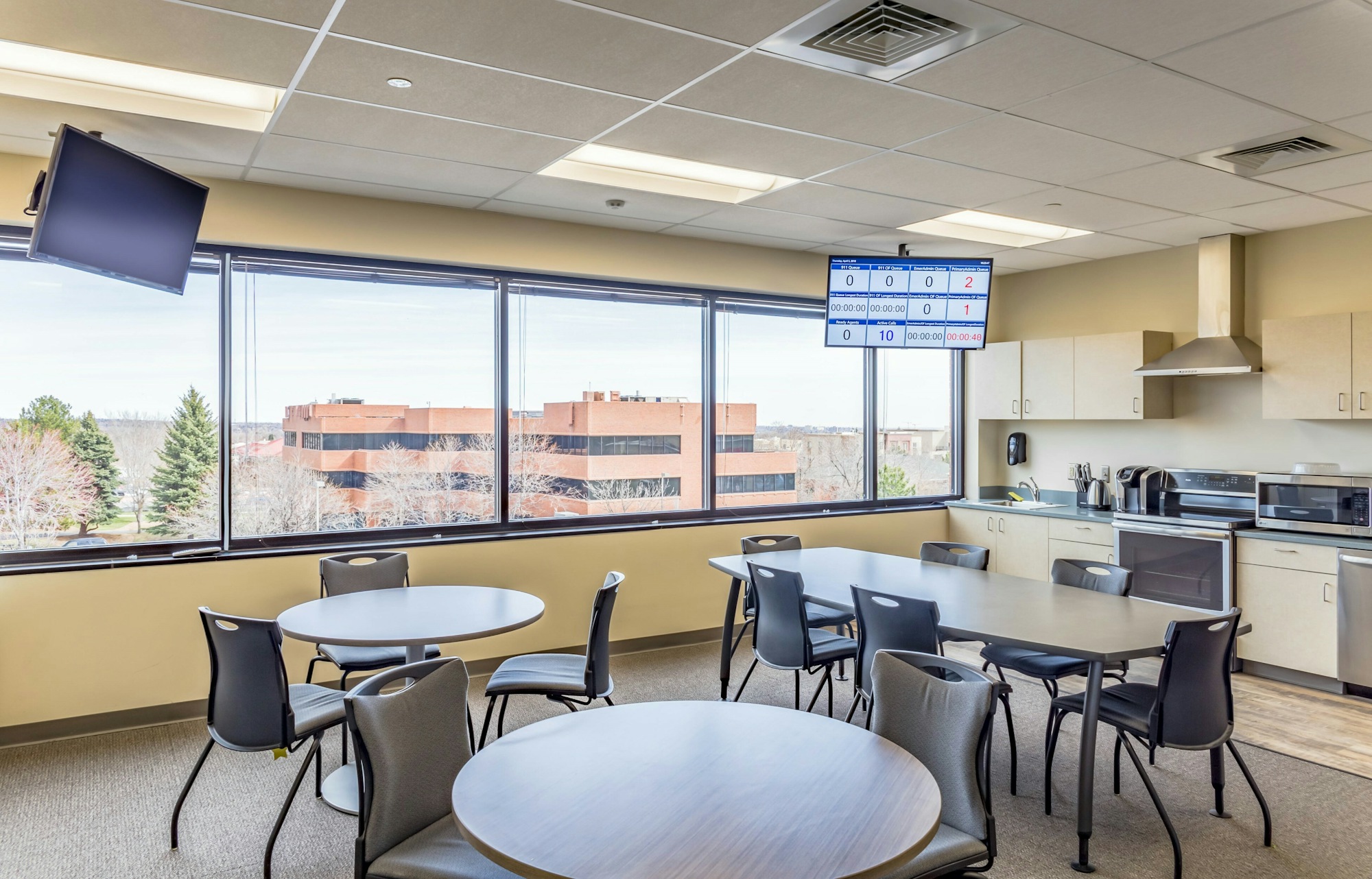
More often than not, an experience that involves interaction with a 911 dispatcher is often a part of someone's “worst day” ever. Constantly on the receiving end of calls from persons experiencing emergency situations, that “worst day” reality is experienced ten fold by dispatchers themselves and is repeated day in and day out.
In their daily responsibilities, the critical incident stress that dispatchers experience is a well documented contributor to staff turnover experienced by communications centers across the country. Because of this, the need to create environments that assist in easing stress and promoting wellbeing for personnel has grown in awareness. In the following, we discuss the physical and behavioral health risk factors associated with being a dispatcher; as well as provide design considerations for combatting these risk factors and how we can help facilitate discussion for incorporating these considerations into your facility environment.

"In 2013, research concluded that being an emergency dispatcher was the 13th most stressful job in America. (1)" "This level of trauma elevates the risk of developing stress-related mental health disorders such as post-traumatic stress disorder (PTSD). (2)" While previous design best practices were successful in optimizing a facility's physical security through hardening and redundancy, they often created harmful environmental conditions which deterred the health and wellness of the staff they housed.
To improve the sturdiness and weather resistance of a center, these building types are often limited in the amount of natural light received. One consequence of the limitation of natural lighting is a negative impact on the mental health of those inside the location. "A study in 2014, conducted by the Journal of Clinical Sleep Medicine, found that office workers with more light exposure at the workplace tended to have longer sleep duration, better sleep quality, more physical activity and better quality of life compared to office workers with less light exposure at the workplace. (3)"
Among the list of risk factors, we specifically wanted to highlight the harmful effects of highly sedentary work. As a dispatcher, shifts primarily consist of sitting or standing at one location answering calls. Sitting or standing creates prolonged health issues and has been considered in some cases as “the new smoking.” "Studies have shown that sitting or standing for extended periods comes with increased risks of long-term health effects including, but not limited to, sleep disorders, increased cancer risks, posture issues and depression. (4)"
As a firm, Wold Architects and Engineers believe that a balance can be achieved whereby physical safety and wellness can both be optimized in a facility design, and that a well planned emergency communications center can play a role in helping to support staff retention rates and lower long-term operational costs.
One vital feature to any space's optimization of mental health is the application of lighting strategies. The lighting of a room can have a significant impact on an individual's overall mood and stress levels. Although we understand the physical security of an emergency communications center is of the utmost priority, we believe elements such as natural light are also necessary to create a healthy work environment for those involved in emergency services. We recommend that centers utilize natural lighting in emergency communication centers to ensure employees have opportunities to receive views of the outdoors. If the center is located in an older facility that inhibits natural lighting, we recommend adjusting lighting fixtures to tunable lighting. Tunable lighting allows users to change the color temperature of light in real-time to adjust to the dispatcher's circadian rhythm. Additionally, we recommend providing ease of access to outdoor spaces for dispatchers to increase the amount of natural light they receive during a shift.

Due to the roles and responsibilities of dispatchers, they are often located in one area throughout their shift, answering emergency calls that come in. With this, dispatchers have limited opportunities for movement while on duty, which can increase chances for future health challenges. To counter this, we believe centers should be designed to increase opportunities for staff to move. One solution is including a dedicated breakroom away from the dispatch floor. By incorporating more than just a kitchen, staff have the option to take their breaks in areas other than at their desk. This can increase opportunities for connection amongst staff and increase the level of physical activity they get during their shift. When personnel are at their desks, we believe it is essential they have proper ergonomic furniture to stay aligned. If you have questions about what appropriate furniture looks like for an emergency communications center, our team would be more than happy to assist in that process.

"For the design complexity of emergency communications center projects, I can recommend Wold Architects and Engineers without exception as a capable, responsive design firm." - Carol A. Morphew, Dispatch Center Building Project Manager, Ramsey County
As a firm, we are committed to engaging our clients in conversations related to how emergency communications center design can improve the health and well-being of dispatchers. If you'd like to learn more about physical and mental health design considerations for 24-hour emergency communication centers, we encourage you to view the resources provided below. Additionally, if you have any questions about our design process related to promoting positive 911 dispatcher physical and mental health, please feel free to reach out to our team at Wold Architects and Engineers (call 1-888-254-6789 or email info@woldae.com).